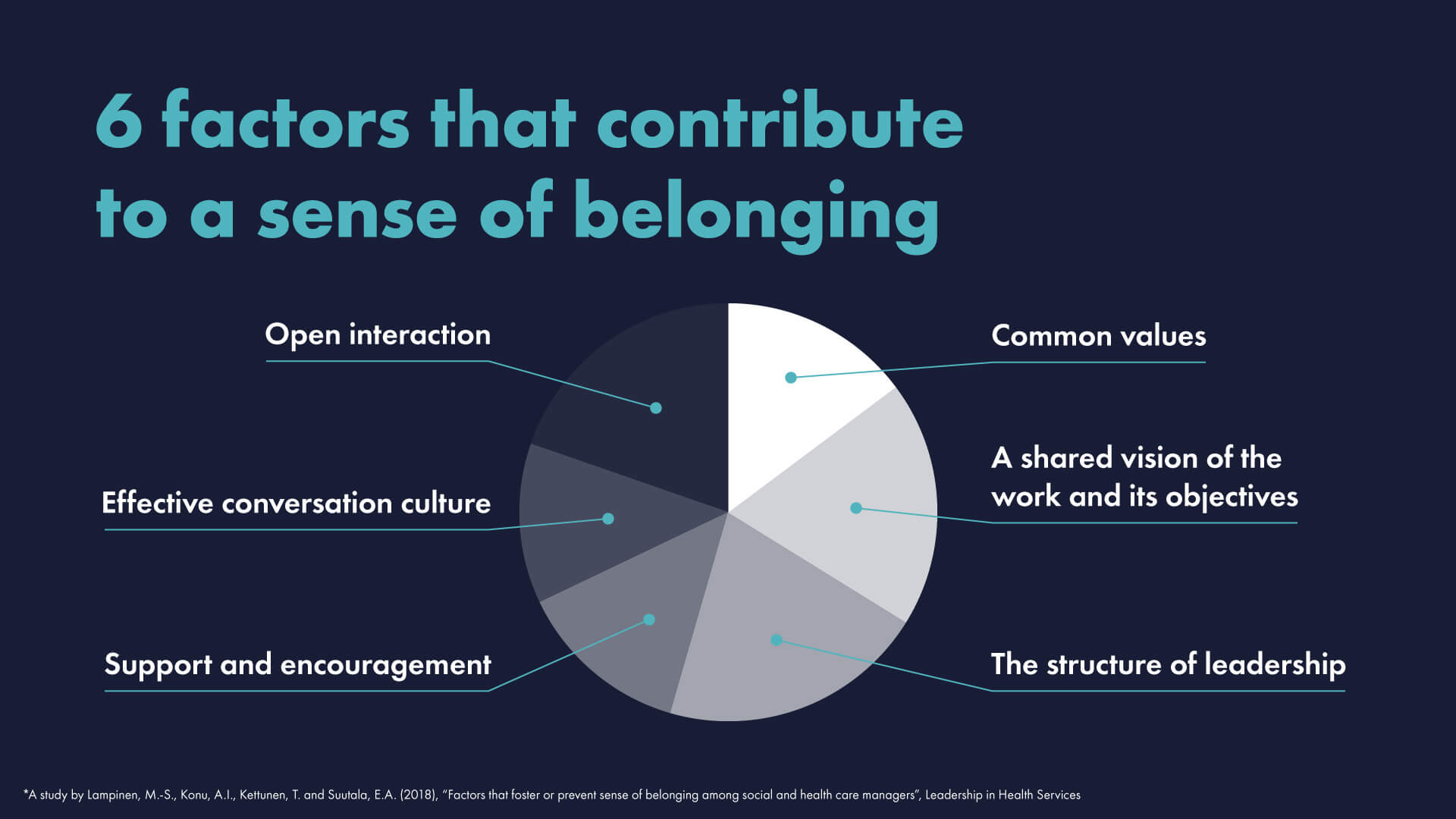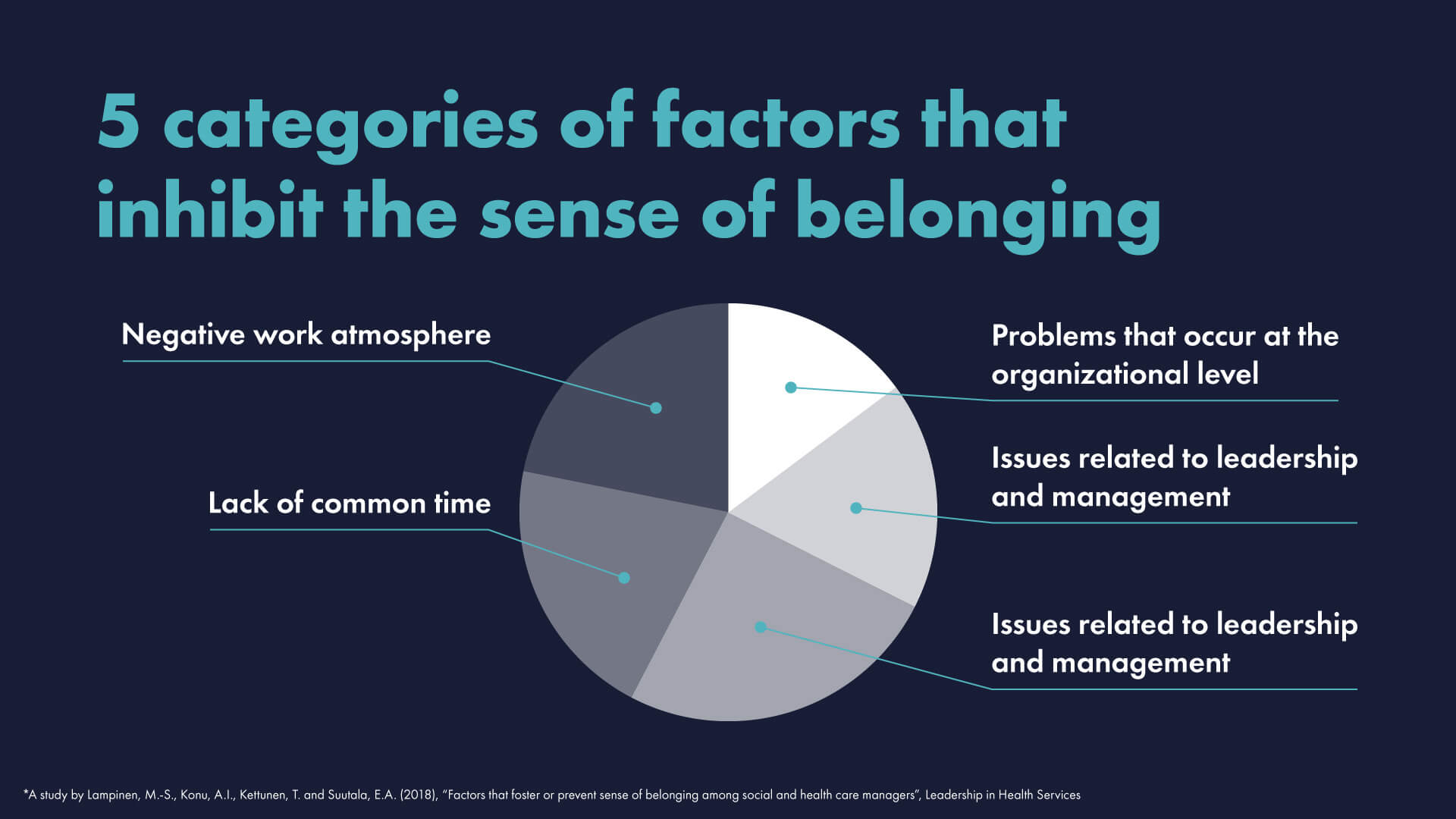The need to belong in the workplace
What is it and why should it be a priority for companies in 2023
What is it and why should it be a priority for companies in 2023

In today's article we will be talking about the need to belong in the workplace, what it is and why it should be a priority for companies in 2023.
In definition the need to belong refers to the idea that humans have a fundamental motivation to be accepted into relationships and be part of a group or society. The need to belong, then, is characterized by the desire to form and maintain relationships that have a certain balance of positivity and negativity.
Although being a very studied field by psychologists and a proven theory, both in theory and in real experiments, it is important to know that the need to belong is not necessarily referring to a one-to-one relationship. Some studies show that the benefits of connections can be also extracted from an affiliation with larger groups, such as clubs, universities, fan communities, etc.
So as you can imagine, although social belonging is embedded in our DNA, the recent years of pandemic and the ongoing conflicts have put a strain on how we interact with one another and in some cases brought isolation both at work and in personal life. Needless to say that our way of interacting has changed and with it our needs in some ways have shifted, but at the end of the day belonging is something that is as important as before, if not even more important.
The concept of belonging is crucial for understanding individuals and how they inhabit and contribute to their workplaces. The ability to share practices in a community, to create meaning, to contribute to shared objectives, to learn via engagement, to grasp new forms of identity through interactions with others, are all related to feeling a sense of belonging at work.
Also, in an era when workplaces are still feeling the impact of work discrimination, it is vital that they foster a culture of belonging to encourage diversity, equity and inclusion, as well as maximizing employee performance. In order for employees to feel valued, safe and supported, companies need to create and maintain a culture of belonging.
In a 2018 study, Culture Amp and Paradigm measured employee experience across seven factors related to diversity, equity, inclusion and belonging. They found that belonging factors were most strongly and consistently correlated with employee engagement. In fact, belonging is the only variable that has been shown to be consistently and universally related to a person's commitment, motivation, and pride in the workplace. Even when they took into account differences in gender, ethnicity, age or sexual orientation, their data showed that an employee was more likely to be engaged if they showed a high level of sense of belonging.
In 2019, a study done by BetterUp shows that employees who find a sense of belonging at work outperform those who do not by 56%. Belonging is also one of the main reasons why the employees are willing to recommend their employer to others, showing a rate for organizational promoter score at an average 167% higher. Additionally, they take fewer medical leave days, have a lower turnover rate and they obtain 18 times more promotions and a double increase in pay. In essence what they found is that belonging supports recruiting and retaining top talent, which is what most of the companies are saying that they are struggling with nowadays.
Similar data was shown in a report by Glint that found, in the first half of 2020, the impact of sense-of-belonging on employee happiness increased 12%; by 2021 it became a key motivator for good workplace culture.
The significance of these findings takes on new meaning within the context of the global pandemic and the actual divisive state in which we are at the start of 2023. Consider how the prevalence of remote work and widespread isolation make it harder for people to build and maintain meaningful relationships at work or foster a sense of belonging. At the beginning of 2020 when the WHO declared the pandemic state for COVID-19, BetterUp revealed that the feelings of belonging dropped dramatically, one in four employees didn’t feel part of the organization. The result of course was a significant impact on productivity, job satisfaction and organizational commitment.
Another recent study from 2021, conducted by McKinsey, showed that more than 50% of those who kept their jobs during the pandemic felt unappreciated, and had a complete lack of sense of belonging.
The behaviors that build and maintain relationships are different when we aren’t physically present with one another. And our understanding of what a sense of belonging even means is still forming—especially in the virtual world. These conditions have emphasized the importance of social connection, inclusion, and belonging for everyone—it is a fundamental human need.
A study from 2018 made among managers in social and health-care services in Finland found six categories of factors that foster sense of belonging:

In the same study, the researchers have identified five categories of factors that inhibit the sense of belonging:

One's sense of belonging at work, according to research by Coqual, a nonprofit think tank, is rooted in four aspects:
Other studies show that the sense of belonging is a result of job crafting, meaning that employees that make bottom-up changes to the task and relational boundaries of their work have more meaningful relations, more autonomy, and competence that leads to a greater sense of belonging (Slemp, Kern, & Vella-Brodrick, 2015).
Furthermore, Albrecht (2013) also acknowledged that feeling appreciated, having mutual respect, gratitude, and interpersonal communication with colleagues, are essential elements of a meaningful work experience and are closely related to enhancing a sense of belonging.
Belongingness theory suggested that when a supervisor appreciates an individual's work, he would emotionally attach to the organization (Baumeister & Leary, 1995). Also, belongingness theory supports the relationship that the feeling of affective commitment can enhance the sense of belongingness at the workplace, hence when the individual perceives emotional attachment at work, he would have a strong sense of belongingness. It is consistent with the findings of (Cockshaw & Shochet, 2010) that affective commitment increases belongingness. The theory further explains that a sense of emotional attachment to the organization refers to creating the perception of acceptance by the group members and belongingness at the workplace.
According to Maslow's Hierarchy, belonging is a fundamental human need. However, the science that explores the human need to belong is still relatively new and continues to expand its scope and validity every day as it explores how belonging to something bigger than oneself contributes to well-being and what it means for our well-being.
In order to nurture a culture of belonging in the workplace, it is essential to examine new research, newly developed interventions, and rapidly emerging ideas within the psychology field of belonging. New data and research can refine and improve even the most effective ideas in cutting-edge science.
So what should the organization plan for in the upcoming years in order to foster a sense of belonging:
1. Implement a feedback system
2. Create recurring meetings
3. Training and coaching
4. Values
5. Encourage social bonds
6. Proactive Intervention following a discriminatory act that helps process exclusion verbally
In this regard ask the excluded person:
7. Job crafting
With these ideas, we conclude our article on the need to belong in the workplace, and we hope that you will challenge your company to change in 2023 based on the ideas presented.
References:
- Albrecht, S.L. (2013), "Work Engagement and the Positive Power of Meaningful Work", Bakker, A.B. (Ed.) Advances in Positive Organizational Psychology (Advances in Positive Organizational Psychology, Vol. 1), Emerald Group Publishing Limited, Bingley, pp. 237-260. https://doi.org/10.1108/S2046-410X(2013)0000001013
- Atlassian, Building A Sense of Belonging
- Baumeister, R. F., & Leary, M. R. (1995). The need to belong: Desire for interpersonal attachments as a fundamental human motivation. Psychological Bulletin,117, 497–529. https://doi.org/10.1037/0033-2909.117.3.497
- BetterUp (2019), “The value of belonging at work.New frontiers for inclusion.”
- Cockshaw, W. D., & Shochet, I. (2010). The link between belongingness and depressive symptoms: An exploration in the workplace interpersonal context. Australian Psychologist, 45(4), 283–289. https://doi.org/10.1080/00050061003752418
- Coqual 2020 The power of belonging. What it is and why it matters in today’s workplace
- Culture Amp and Paradigm 2018 Diversity, Inclusion and Intersectionality Report
- De Smet A., Dowling B., Mugayar-Baldocchi M. and Schaninger B (2021) “‘Great Attrition’ or ‘Great Attraction’? The choice is yours” McKinsey Quarterly
- Glint-May-2021-Employee-Well-Being-Report
- Lampinen, M.-S., Konu, A.I., Kettunen, T. and Suutala, E.A. (2018), "Factors that foster or prevent sense of belonging among social and health care managers", Leadership in Health Services, Vol. 31 No. 4, pp. 468-480. https://doi.org/10.1108/LHS-09-2017-0054
- Slemp, G. R., Kern, M. L. and Vella-Brodrick, D. A., (2015). Workplace well-being: The role of job crafting and autonomy support. Psychology of Well-being, 5(1), 1-17